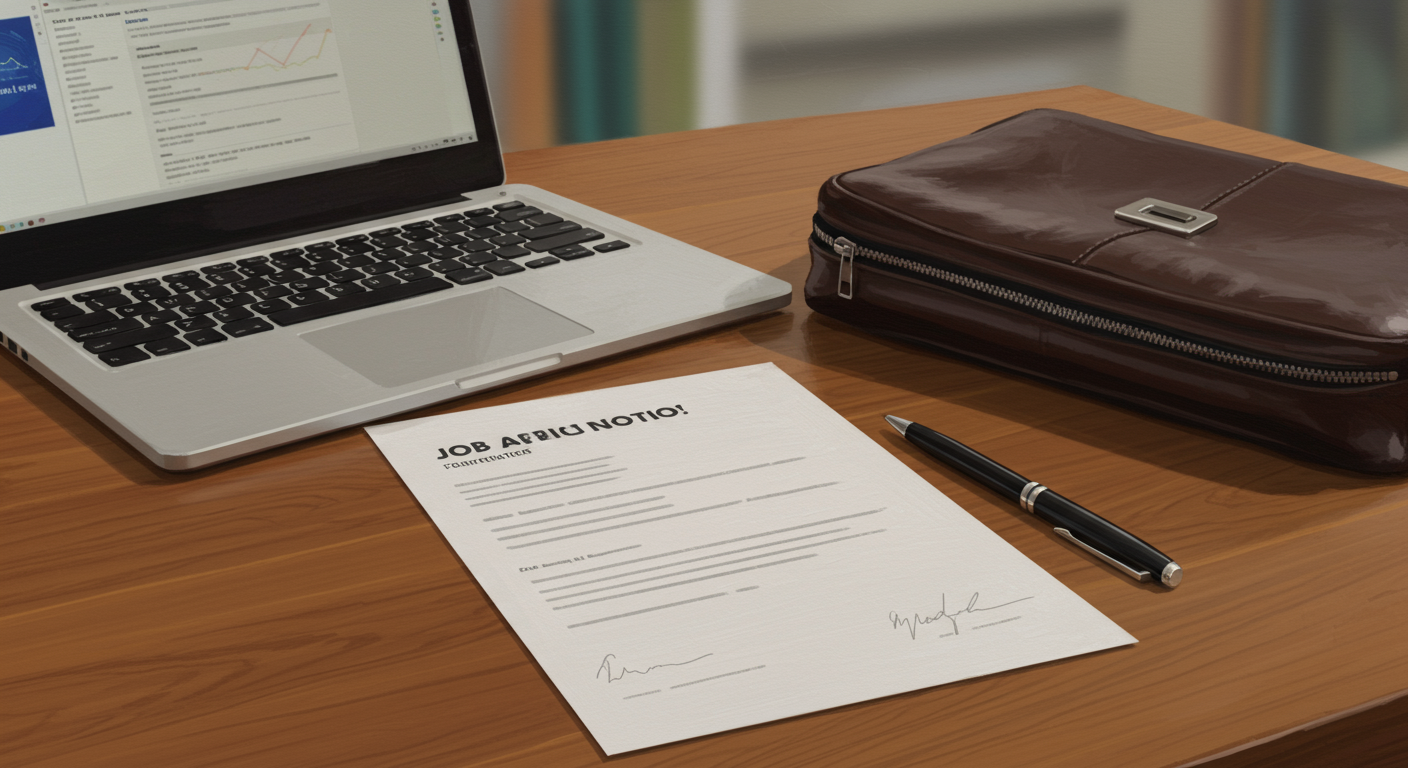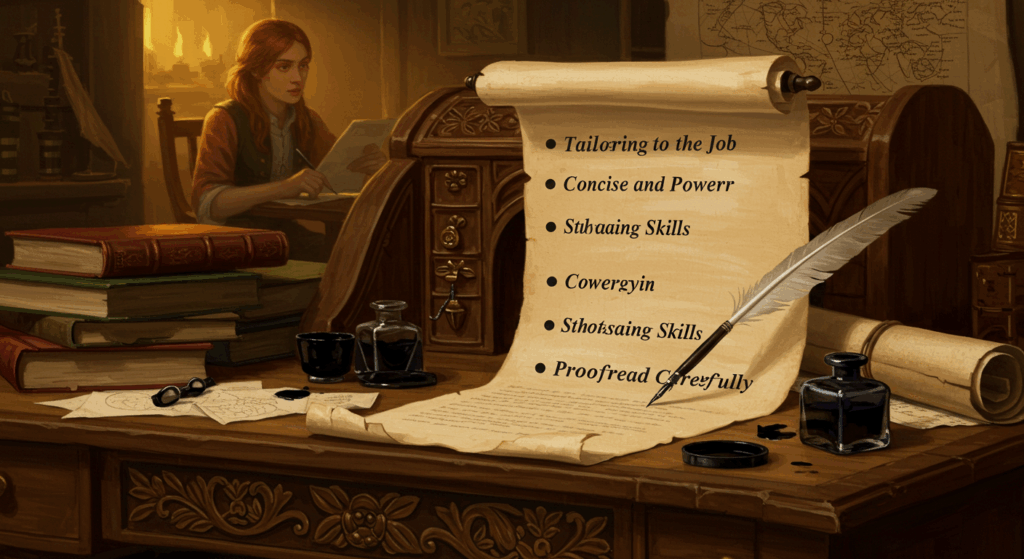Let’s be honest: writing a cover letter and resume can feel like cleaning out your camera roll—so many choices, a little cringe, and you’re tempted to give up and just… not. But if you want more “You’re invited to interview 🎉” emails and fewer ghosted applications (ugh), a strong cover letter + resume duo is your best combo meal. Think of them like your profile and opening message on a dating app: one shows who you are, the other starts a conversation. Get both right and suddenly recruiters are swiping right on you.
I’m going to walk you through the whole thing—how to write both pieces without losing your sanity, what introduction and format actually work, what examples are worth copying (and what to avoid), and how to sound like a real human instead of a corporate robot. We’ll keep it conversational, a lil’ messy, and very doable. Grab coffee or a snack; let’s do this.
Introduction: Why Your Cover Letter and Resume Still Matter (ngl, they do)
People love to say “No one reads cover letters anymore.” Meanwhile, hiring managers: “Please explain why you want to work here and how your experience fits the role.” Your resume is your greatest hits album—curated, structured, all facts. Your cover letter is the behind-the-scenes interview—your voice, your motivation, your story. Together they show competence + personality. If you only send one (or send a bland version), you’re leaving opportunity on the table.
Also, the hiring process is basically a funnel: applicant tracking systems (ATS) filter first, then a human skims, then a short list gets deeper attention. A clean resume format and keyword alignment get you through the bots; a clear, friendly cover letter gets a hunman to care. You want both.
Quick Mindset Shift Before You Start
- Your goal isn’t to be “the best candidate ever,” it’s to be obviously qualified and likable for this specific job. Not every job. This one.
- Specific beats fancy. “Led cross-functional initiatives” is fine; “Launched a student ambassador program across 8 campuses, growing signups from 120 to 540 in one semester” is better.
- You’re writing for speed-readers. Real talk: reviewers skim while eating noodles and answering Slack. Make it easy: headings, white space, bullets, strong verbs.
- Done > perfect. You can tweak later. (Like rearranging your Spotify playlist after the first listen.)
How the Pieces Fit: Cover Letter vs. Resume (and who does what)
- Resume: one or two pages, structured, scannable. Focus: what you’ve done and the impact. Think: timeline + results.
- Cover letter: 3–5 short paragraphs, conversational. Focus: why this company/role and how your experience connects. Think: curated story + bridge to your resume.
If the resume answers “Can you do the job?” the cover letter answers “Do you want this job (and will you vibe with the team)?” Both matter.
The Right Format (for humans and ATS): Simple Wins
Minimalist layout. Black text on white. One font family. Clear headings. That’s it. ATS can be picky about funky designs and text boxes; humans get dizzy with clutter. Choose a clean format so both the robots and the people are happy.
Resume basics (format checklist):
- File: PDF (unless the application specifically wants Word).
- Length: 1 page if <10 years experience; 2 pages if you truly need it.
- Sections: Header, Summary (optional but recommended), Experience, Skills, Education, Extras (certs, projects).
- Fonts: system fonts (e.g., Calibri, Arial, Georgia, Times, Helvetica). 10.5–12pt text; 13–16pt for headings.
- Margins: ~0.5–1 inch. Lots of white space = easier skim.
- No tables/columns unless you’re sure ATS can read them (when in doubt, single column).
Cover letter basics (format checklist):
- Length: 250–400 words. Short and punchy > long and rambly.
- Structure: Greeting → Hook/Introduction → Body (2 short paras) → Close/CTA.
- Tone: professional-friendly. Human. Warm. Not a robot in a tie.
The Cover Letter: From Blank Page to “Heck Yes, Interview Them”
Your Cover Letter Introduction: Hook Without the Hype
The first 1–2 lines are everything. Ditch “I’m writing to express my interest…” (the hiring manager knows). Try a hook that blends why you with why them.
Examples (openers you can steal):
- “I’ve been quietly reverse-engineering [Company]’s onboarding flow ever since your summer launch—and ngl, it’s kind of brilliant.”
- “In my last role, I turned customer complaints into a 26% month-over-month retention lift. I’m excited to bring that same scrappy energy to [Company]’s Lifecycle team.”
- “As a barista-turned-data analyst, I learned to love two things: complex orders and cleaner dashboards. Your posting checks both boxes.”
The introduction should show enthusiasm and a hint of personality without trying to be a stand-up routine. Think cool-friend energy, not “LinkedIn influencer.”
The Middle: Connect Your Dots to Their Needs
Pick 2–3 proof points from your resume and translate them into the company’s language. Show outcomes, not just tasks.
- Before: “Managed social media accounts.”
- After: “Grew TikTok from 0 to 38k followers in four months with a 7.5% average engagement rate; turned two videos into paid collabs.”
- Before: “Handled customer support.”
- After: “Resolved 40–60 tickets/day at 92% CSAT; designed a ‘first-reply macro’ that cut average response time from 3h to 1h.”
Tie each proof point directly to a line or theme from the job description. (Yes, actually read it. I know. But trust.)
The Close: Confident, Clear, and With a Next Step
Skip the desperate “I would be honored if…” vibes. End friendly and confident:
- “I’d love to share how we took a churn-heavy segment and built a retention playbook that stuck. Mind if I send a 2-slide overview?”
- “If helpful, I can share a live walkthrough of the dashboard I designed—the filters alone saved our PMs hours/week.”
Then sign off with something simple:
- “Thanks for considering my application—appreciate your time!”
- “Looking forward to chatting.”
Quick Cover Letter Examples (Short, Human, Effective)
Example #1 (Marketing Associate)
Hello [Hiring Manager Name],
I’m applying for the Marketing Associate role at [Company] because I’ve been a fan of your zero-waste mission since your first pop-up shop—and I think my scrappy, test-and-learn style fits right in.
At [Current Company], I took over TikTok with a $0 budget, testing 3 content series/week. Four months later, we went from 0 to 38k followers and averaged 7.5% engagement, with two organic videos leading to paid collabs. I also ran 14 email A/B tests that lifted click-throughs by 23% (and yes, I still geek out over subject lines).
Your job description mentions lifecycle campaigns and UGC. I’ve done both. I built a referral campaign that drove 18% of Q2 signups, and with our UGC partners, I created a monthly content engine that fed paid + organic. Happy to share the mini playbook we used.
Thanks for reading—would love to compare notes and learn more about your roadmap.
Best,
[Your Name]
Example #2 (Customer Success / Support)
Hi [Name],
I’m excited about the Customer Success role because your product actually fixes a problem I used to wrestle with daily. At [Company], I handled 40–60 tickets/day, usually the gnarly ones. Over six months, my CSAT averaged 92% and I cut our average first response from 3 hours to ~1 hour by building a macro set and a “Top 10 Fixes” internal doc.
I’m especially drawn to your focus on onboarding—most churn happens early, and I’ve been obsessed with smoothing that first week. I piloted an onboarding check-in flow that moved activation from 61% to 74%. I’d love to bring that same energy here.
If helpful, I can send a two-minute Loom showing how I build those docs and flows. Thanks for considering!
—[Your Name]
The Resume: Make It Skimmable, Impactful, and ATS-Friendly
Your Header: The Essentials, Not Your Full Biography
- Name (big and easy to find)
- Location (City, ST or just “Remote”)
- Email (no “cutiepie2007@…”)
- Phone (optional, but helpful)
- LinkedIn and/or portfolio link (custom URL looks cleaner)
Summary (Optional but Useful)
Two–three lines to frame your story. Great for career changers or generalists.
Examples:
- “Lifecycle marketer with 3+ years optimizing email/SMS for SaaS and e-comm; shipped 40+ A/B tests and lifted LTV 18% in 2024.”
- “Former teacher turned People Ops generalist. Calm under pressure, spreadsheet fan, and culture-builder who loves turning feedback into rituals.”
Experience: Bullets that Actually Prove Stuff
Each role gets 3–5 bullets. Start with a strong verb, end with an outcome. Use numbers or specifics whenever possible. If you can add context (“why it mattered”), do it.
Bullet recipe (works like magic):
[Action verb] + [what you did] + [how you did it] + [result/impact]
Examples:
- “Launched a content calendar across TikTok/IG (3 series/week), reaching 2.1M views in Q2 and generating 1,100 signups with UTM tracking.”
- “Rebuilt onboarding emails (4-part series) using user segments; activation up 13 points, unsubscribes down 31%.”
- “Implemented Zendesk macros + ‘Top 10 Fixes’ doc, cutting first response from ~3h to ~1h; maintained 90–94% CSAT.”
If you’re light on formal experience, use Projects or Volunteer with the same bullet style. A scrappy project that helped real people > a vague line about “passion.”
Skills: Keep It Honest (and Organized)
Split into Technical and Soft/Functional skills (e.g., SQL, Excel, Figma, HubSpot, Zendesk, Spanish; and “Stakeholder management, facilitation, training”). If it’s job-relevant and you can discuss it in an interview without sweating, add it. If you used it once in college and barely remember… maybe not.
Education, Certs, and Extras
- Put GPA only if it helps (3.7+ ish).
- New grads: education near the top.
- Certifications (Google Analytics, Meta Blueprint, ScrumMaster, whatever is relevant).
- Awards, talks, or press lines can go here too.
Choosing the Best Format for Your Resume (With Examples)
Reverse-chronological (most common): Your most recent role first, then backwards. Great if you’ve got a solid work history.
Functional/skills-based: Groups bullets under skill themes (“Data Analysis,” “Operations”), then lists employers briefly. Good for career changers—but be careful, some ATS/humans don’t love it.
Hybrid/combination: A short skill summary upfront + reverse-chronological experience. This is a sweet spot for many people.
Simple format example (hybrid):
SUMMARY
Customer Success specialist with 3+ years in B2B SaaS. Obsessed with onboarding, retention, and turning feedback into playbooks. 92% average CSAT; piloted flows that raised activation 13 points.
CORE SKILLS
Onboarding • Playbook design • Zendesk • Notion • Training & enablement • Churn analysis • SQL basics
EXPERIENCE
Acme SaaS — Customer Success Specialist (2022–Present)
- Managed 80+ SMB accounts with 92% CSAT; built “Top 10 Fixes” doc that cut avg response time ~66%.
- Designed a 4-week onboarding flow (emails + office hours) that lifted activation from 61% → 74%.
- Partnered with PM to triage escalations and closed the loop with “Known Issues” center.
Beta Startup — Support Associate (2020–2022)
- Resolved 40–60 tickets/day; trained 5 new hires using a Notion handbook.
- Created macro set + voice/tone guide; QA accuracy up 22%.
EDUCATION
B.A., Communications — State University
Real Talk: What to Put Where (and What to Skip)
- Objectives (“seeking a role where I can…”) → skip. Use a Summary instead.
- References → skip. “Available upon request” is assumed.
- High school → skip unless you’re brand new to the workforce.
- Photos → generally skip unless it’s standard in your region/industry.
- Personal data (birthdate, marital status) → skip.
- Hobbies → optional. Cool if relevant or shows dimension (“Marathoner,” “Community garden coordinator,” “Hackathon winner”).
Keywords & ATS: How to Get Past the Robots (without being cringe)
- Take the job posting. Highlight words repeated or emphasized (skills, tools, responsibilities).
- Mirror those words naturally in your resume (Skills + bullets) and cover letter (body paragraphs).
- Use standard job titles where possible. “Customer Happiness Ninja” might be cute, but “Customer Success Associate (official title: Customer Happiness)” is safer for ATS.
Writing Voice: How to Sound Like You (and Still Professional)
- Use active verbs: launched, led, built, designed, shipped, analyzed, facilitated.
- Keep sentences short-ish. People skim.
- Drop the filler: “responsible for,” “helped with,” “worked on.” Replace with action + result.
- Be concrete: numbers, timelines, tools.
- Sprinkle personality in the cover letter. Not the resume. The resume is neat; the letter is where you can say “ngl,” “I geek out on…”
Put It Together: A Mini Workflow That Works
- Collect ingredients: job posting, your past bullets, any results/metrics, portfolio links.
- Draft resume first: confirm your strongest proof points and numbers.
- Write the cover letter: pull 2–3 bullets from your resume and connect them to the job.
- Keyword pass: scan the posting, add missing keywords naturally.
- Friend check: read both aloud (or ask a friend). Anything confusing? Any jargon soup? Fix it.
- Final polish: consistent punctuation, tense, spacing, headings. Save as PDF.
- Submit + track: keep a tiny spreadsheet (company, role, date, status, notes). It helps—promise.
More Examples: Ready-to-Use Lines You Can Adapt
Introduction Lines (Cover Letter)
- “Last quarter I owned our onboarding flow and bumped activation by 13 points. Your focus on new-user education is exactly my lane.”
- “I love the way [Company] makes climate tech feel less doom-y and more do-able. That combo of clarity + hope is why I’m applying.”
Impact Bullets (Resume)
- “Ran 12 monthly workshops for 300+ attendees; NPS 67, repeat attendance 46%.”
- “Consolidated 3 spreadsheets into one automated dashboard; reduced weekly reporting time from 4h → 45m.”
- “Negotiated vendor contract (-18% cost) while raising SLA compliance to 99.2%.”
Soft Skills (But With Proof)
- “Facilitated cross-team sprint planning each Tuesday; cut blockers by ~40%.”
- “Mentored two interns who became full-time hires; designed a 3-week onboarding path still used today.”
Common Mistakes (and how to fix them fast)
- Walls of text. Fix: add bullet points, white space, and clear headings.
- Vague verbs. Fix: swap “helped” with “built/led/launched/optimized” and add a result.
- No numbers. Fix: add scope (how many? how often? how much?).
- Copy-pasting the same letter everywhere. Fix: tailor 15–20% (intro, 2–3 proof points, closing line).
- Over-formatting. Fix: keep the format simple. Fancy is fragile.
What If You Don’t Have Experience? (You probably do, just not labeled)
- Projects: school, freelance, volunteer, hackathons, personal builds. Treat them like jobs with impact bullets.
- Coursework: list key courses only if relevant to the job.
- Transfer skills: retail/food service = customer communication, conflict resolution, time management, teamwork. Say the quiet part out loud with examples.
- Show your work: a Notion page or simple site with 2–3 case studies beats 10 vague lines on a resume.
Editing Pass: A Quick Checklist Before You Hit Submit
- Introduction (cover letter) is specific to the company and not generic.
- Format is clean, readable, and PDF-ready.
- Examples and nunbers appear in most bullets.
- Verb tense: present tense for current job, past tense for previous.
- Consistency: dashes, punctuation, date formats (pick a style and stick to it).
- File names:
FirstnameLastname_Resume.pdf,FirstnameLastname_CoverLetter_Company.pdf. - Links: test them! Nothing like a 404 to kill the vibe.
Bonus: Tiny Templates You Can Copy-Paste
Cover Letter Skeleton (Fill in the Brackets)
Hello [Name],
[Hook: one-liner tying your experience to their mission/problem.]
[Proof #1 with outcome. Translate it to their needs.]
[Proof #2 with outcome. Add a brief detail that shows you did the homework.]
[Optional Proof #3 or culture value you align with.]
[Close: offer a next step or artifact (deck, Loom), and thank them.]
Best,
[Your Name]
[LinkedIn] • [Portfolio]
Resume Bullet Bank (Swipe and Tweak)
- “Built [X] from scratch, reaching [Y metric] in [Z timeframe].”
- “Reduced [pain metric] from [A] to [B] by implementing [tool/process].”
- “Led [team/partners] to deliver [project] on time; result: [business outcome].”
- “Analyzed [data set] to identify [insight]; actioned with [change], improving [metric] by [%].”
A Note on Tone and Personality (a.k.a. Don’t Overdo the Quirk)
It’s okay to sound like a human. A little personality—“ngl,” an emoji here or there in a cover letter (sparingly), a dry joke—can help. But don’t let it overshadow clarity. If you’re applying to a bank or a government agency, keep it crisp and classic. If you’re going for a start-up or creative shop, you can loosen the tie a bit. Read the room (aka the job posting, the website, the vibe).
Updating for Each Application Without Starting From Scratch
- Keep a Master Resume with every bullet you might use. Duplicate it and cut to fit each job.
- Keep Cover Letter Paragraphs in a doc: a few intros, a set of proof-point paragraphs, and a couple of closes. Mix-and-match to tailor in minutes.
- Build a tiny Wins doc (Notion/Google Doc) where you drop metrics and “I did this” moments weekly. Future-you will thank past-you.
Final Touches That Quietly Impress
- Consistency in micro-details: hyphens vs en-dashes, smart quotes vs straight, Oxford comma or not. Looks small, reads professional.
- Accessibility: readable font size, strong contrast, no light gray text, descriptive link labels.
- Context in bullets: add “why” when it helps (“…to prepare for Series A,” “…to support a 3x user spike,” “…as part of a 6-person tiger team”).
- Proofread: read aloud. You’ll catch weird phrasing instantly. (Do it. Even if it feels silly.)
Wrap-Up: You’ve Got This (and I mean it)
Writing a cover letter and resume doesn’t have to feel like doing taxes while your Netflix keeps asking “Are you still watching?” Keep it simple: clean format, a sharp introduction, and real-world examples that prove your impact. Tell a short, true story about why you want this job at this company and how your work lands results. That’s it. No secret handshake. No magic template.
Now go draft the resume, write the letter, and apply to that role you’ve had open in your tabs for three weeks. Hit send, take a quick walk, and let the future unfold a little. You’re more ready than you think.









